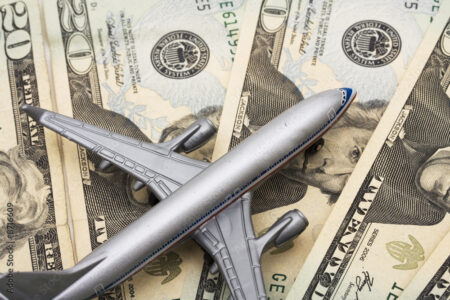There are two major challenges facing the US business aviation sector – proposals under discussion in Washington for the creation of a privatized air traffic control (ATC) system funded by user fees and, separately, the growing use of unmanned aircraft (UA).
While there has been no firm confirmation that the USA’s ATC system will be privatized, the NBAA’s president and CEO Ed Bolen was so concerned by the emerging proposals to do so that he released a call to action in June 2015, urging the NBAA’s 10,000 member companies to “make their voices heard in strong opposition to any legislative proposal that would strip congressional oversight of the nation’s ATC network in favor of a private entity funded through user fees”. The response has been “significant” Bolen claims, with thousands of people taking the time to contact their elected officials and express their concerns.
So what exactly is Bolen’s issue with ATC privatization? “There have been proposals throughout the years about moving ATC out of government control, and this has been periodically pushed by the big airlines, which want more control over the ATC system in the belief that they can run it more efficiently than Congress. We’ve long had concerns about Congress delegating its authority over public airspace to a combination of self-interested stakeholders, because we want to make sure that the public airspace is operated for the public’s benefit. We have concerns about business aviation’s access to airports and airspace in any privatized system funded by user fees,” he explains.
The NBAA has yet to see a formal legislative proposal for such a new system. However, Bolen is adamant that the current fuel tax system is a fairer and more efficient way for aviation users to access airports and airspace in the USA. “We believe user fees would introduce an administrative burden where one does not currently exist with the payment of taxes,” he says. “In addition there is the potential for diminished access to airports and airspace.”
As well as his call for action, Bolen has testified in congressional hearings and continues to meet with several senators and congressmen to discuss the issue. For Bolen, it is important for the government to understand the benefits of the current fuel tax system and the impact any changes would have on business aviation – which contributes US$219bn to the US economy each year.
“There are multiple benefits of the fuel tax system – for the government, for the environment and for the individual operators,” Bolen notes. “From the business aviation operator standpoint, you simply pay all your taxes at the pump – there’s no record keeping, invoices, audits, document retention protocols or arbitration over inaccurate invoices.
“In contrast some of the user fee-oriented systems – where people may get invoices several months after they have flown, or receive incorrect invoices in addition to having to create purchase orders, mail checks and keep records – are more administratively burdensome. So from the operator standpoint, we don’t think user fees are as efficient. We’ve always said that anything a user fee can do, a fuel tax does better.”
Unmanned aircraft
The USA has seen a rise in the number of UA entering its airspace in recent years. According to the US Civil Aircraft Register there were more than 1,500 UA with N-numbers in July 2015, 1,477 of which were classed as “small”. However, only those UA used for commercial purposes must be registered, so the number of UA in the airspace could be far higher when hobby or recreational users are included.
There have been a number of UA near-misses reported in the media in recent years, leading the FAA to release proposed regulations for small drones in February 2015 (see Drone regulations, right). “It is clear that these systems are going to impact the way we live and the way we work,” Bolen explains. “Certainly they will be in the airspace and we want to make sure there is good understanding and dialog about the opportunities and challenges associated with certifying and integrating these types of vehicles within our airspace.”
The future of business aviation
Business aviation is tremendously important in the USA, and there has been substantial recent growth (6% year-on-year in 2013 according to the JSSI Business Aviation Index 2014). “Business aviation in general follows the economic cycles of any given country or region, and in the USA we are experiencing a period of growth,” says Bolen. “The USA is the single-largest business aviation country in the world, so if the USA is growing that is a very positive sign for the international community.”
Bolen is hopeful that this trend will continue and believes that the implementation of NextGen in the coming months and years will have a positive impact on the industry. NextGen proposes to transform the USA’s air traffic control system from a ground-based system to a satellite-based system and will be implemented across the USA in stages between 2012 and 2025.
“NextGen will do at least three really important things,” Bolen explains. “First, it will increase system capacity, and that is very important to us. We have seen that when airports or airspace become overcrowded, business aviation tends to get squeezed out, so we support programs that increase capacity and believe that a bigger pie will be good for business aviation’s access to airports and airspace. Increased capacity is a primary reason for NBAA to support NextGen.
“Second, the technology will increase safety by enhancing situational awareness. And third, NextGen will help aviation as a whole reduce its environmental footprint by providing more direct routes, closed approaches, continuous descent – all of those things can make the overall system more efficient, and therefore reduce our environmental footprint.”
NBAA will continue to support the development of business aviation and fight its corner on the world stage. The wider media often portrays business aviation as merely a toy for the rich and famous, but as Bolen explains, “The use of business aviation brings people together – often from distances far apart – and the resulting face-to-face interaction has long been recognized as one of the most effective ways to do business. It has been said that if you pave a mile of road, you can drive a mile. If you install a mile of railroad track, your train can go a mile. But, if you build a mile of runway, you can go anywhere in the world.”
NBAA 2015
Unmanned aircraft will be an important topic of discussion at this year’s Business Aviation Convention and Exhibition in Las Vegas in November. “I think it will draw a lot of attention,” Bolen comments. “Other educational sessions will cover safety, security, professional development, etc, and the conference provides the ideal place to discuss relevant topics in great detail.”
Alongside the conference will be the exhibition, which attracts more than 25,000 attendees each year. Bolen explains, “This is the largest business aviation event in the world, and manufacturers and services companies from all over the globe come and show the latest technologies and advances.
“This is an opportunity where any business aviation operator can see the state-of-the-art in products and services from all over the world. Technology and products are always the stars of the show.”
October 6, 2015
This article was originally published in the October 2015 issue of Business Airport International




